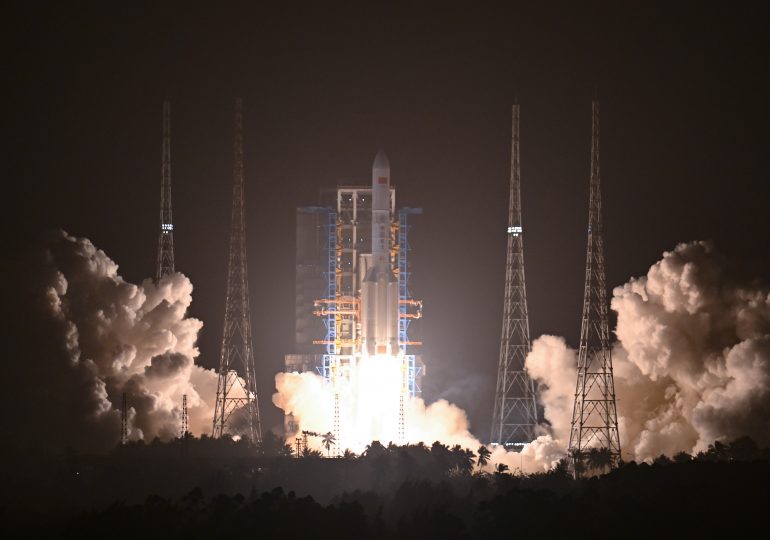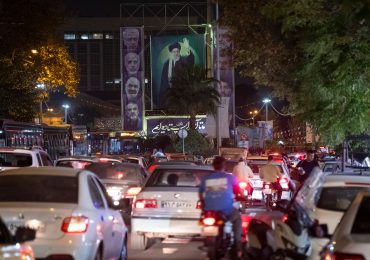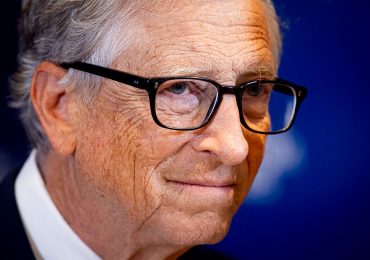Roughly 6,800 miles separate humanity’s past and future on the surface of the moon. It’s the approximate distance between the Sea of Tranquility—where Apollo 11’s Neil Armstrong and Buzz Aldrin first landed on July 20, 1969—and Shackleton Crater at the south lunar pole. The vicinity of Shackleton is where astronauts from the U.S. and, quite likely, taikonauts from China (from the Chinese word “taikong,” meaning space or cosmos) will touch down sometime during or before 2030, taking advantage of local ice deposits that can be harvested for water, breathable oxygen, and even rocket fuel.
[time-brightcove not-tgx=”true”]
To hear the U.S. tell it, we’ll be the first to stick the landing. “The statement I’ve heard around NASA is, ‘We want to be there to greet them when they arrive,’” says Howard McCurdy, professor emeritus of public administration and policy at American University.
If the space agency holds to its notion of flying the Artemis II crew on a looping journey around the far side of the moon late next year, and landing the Artemis III crew in the south polar region in 2026 or 2027, the next boot prints on the moon will indeed be American. But don’t count on it.
NASA’s Space Launch System moon rocket has flown just once, in late 2022. While it successfully sent an uncrewed Orion spacecraft on a 26-day lunar orbital mission, later analysis found that the rocket shed foam in much the way the shuttle Columbia did during its launch in 2003—a liftoff anomaly that led to the catastrophic loss of the shuttle during its return through the atmosphere. Orion’s heat shield, meanwhile, did not fully withstand the 5,000°F fires of reentry sufficiently for the spacecraft to be considered safe to carry a crew. And as for the lunar lander? NASA has placed the job of providing the 21st century’s version of the Apollo program’s lunar module in the hands of SpaceX, which plans to build the craft out of a modified version of the upper stage of its Starship rocket—a rocket that has yet to have a fully successful flight.
Finally, there is money. NASA’s fiscal 2024 budget is $24.875 billion, which represents a small cut from its $25.4 billion allotment in 2023. In the Apollo era, when the U.S. went from a standing start in 1961 to the surface of the moon eight years later, space spending topped out at about 4% of the federal budget; now, it’s 0.4%.
Read More: The ‘Devil Comet’ Will Be a Heavenly Co-Star During the Eclipse. Here’s What to Know
“If you don’t have the money, the schedule is going to slip,” says Scott Pace, director of George Washington University’s Space Policy Institute. No one believes we’re going back to the glory days of 4%, but we don’t need to be there to meet the 2027 goal. “The [inflation adjusted] $29 billion or $30 billion we had in 1999 is where we need to be now,” Pace says.
Even that relatively modest bump does not seem to be forthcoming, however, and that leaves an open field for China. As SpaceNews has reported, on Feb. 26 Beijing released its space Blue Book, detailing its plans for 2024 and beyond, and they are equal parts impressive and ambitious. The country’s state-owned China Aerospace Science and Technology Corporation (CASC), a Fortune 500 company, working hand in hand with the China National Space Administration (CNSA)—China’s NASA—is planning a total of 70 launches in 2024, placing more than 290 satellites, cargo vessels and crewed spacecraft into Earth orbit. The burgeoning private sector has another 30 launches on its manifest.
Two different crews will rotate into and out of China’s Tiangong (or Heavenly Palace) space station, and two uncrewed cargo flights will provision the outpost. Multiple launch sites, including a sea-based spaceport off the coast of Haiyang and a commercial spaceport on Hainan Island, will see the country fly various iterations of its Long March booster—including its heavylift Long March 5, which is slated for four launches this year and could be used both for Earth orbital and deep space missions.
It is that last part of China’s space remit that is turning the most heads in the West—particularly its planned flights to the moon. On March 24, the Queqiao-2 satellite entered lunar orbit, where it will begin coordinating an anticipated growth in communications traffic coming from the surface of the moon. Later in the year, the CASC plans to take advantage of that new radio infrastructure when it launches Chang’e-6, the first-ever mission to return samples from the lunar far side. In 2026, the Chang’e-7 orbiter, lander, and rover will touch down in the moon’s south pole. Chang’e-8, penciled in for 2028, will be a lander, rover, and robot designed to test resource utilization—especially ice harvesting and processing—that would eventually be put to work at a crewed lunar base.
The Blue Book calls for the first taikonauts to land on the moon before 2030 and for an International Lunar Research Station (ILRS) to be established with multiple partners—including Russia, Belarus, Pakistan, and South Africa—in the decade to follow. Those timelines are not unrealistic, according to experts in a position to speculate.
“There’s no question that the technology they have is verging very close to being competitive with us,” says Sean O’Keefe, Administrator of NASA from 2001 to 2005, and now professor of public administration at Syracuse University. “Two years ago, I would not have said that, but they are really improving to the point that [the 2030] objective is conceivable.”
Adds McCurdy: “We did it in eight years; they could do it in six.”
Read More: See the 2024 Solar Eclipse’s Path of Totality
Part of what makes China so formidable a force in reaching the moon is its command and control economy and policy-making. NASA’s objectives often change with every new occupant of the Oval Office: Pres. Richard Nixon ended the Apollo program and replaced it with the shuttles; Pres. Ronald Reagan reduced NASA’s shuttle-centric focus and turned to building a space station; Pres. George W. Bush put the U.S. back on the path to the moon and also Mars; President Barack Obama scrapped those plans in favor of a mission to an asteroid; Pres. Donald Trump pulled the plug on the asteroid and returned the moon to the agenda. None of that makes for the kind of consistency that allows technology to be developed and built out and long-term goals to be reached.
China’s autocracy side-steps such policy messiness, proceeding in unchanging, half-decade increments with its serial five-year plans. The current one, running from 2021 to 2025, does not include a crewed lunar landing because it is outside of that time window, but Beijing has floated the 2030 goal all the same.
“They have ambitions to do this,” says Pace. “People have said the deadline is rather ambitious, but they probably would not [try] unless they had a high confidence of doing it. The political fallout for being wrong would be quite, quite severe.”
As with the U.S., money plays a major role, but in the case of China, there’s plenty to be had. Officially, China’s space budget is significantly less than NASA’s, standing at $14.15 billion last year. But it’s that business of “official” versus “unofficial” that makes the difference. The Chinese space sector is inseparable from the Chinese defense sector, and the same deep pockets that make China’s military the largest in the world are believed to provide a generous source of additional funding for the country’s space program—even if Beijing does not open its books for public inspection.
“They’re very opaque on what they are engaged in and how much they spend,” says O’Keefe.
“Is the Chinese manned space program embedded in the military? You betcha’,” says Pace. “Does the military contribute to the manned space program? You betcha’.”
None of that necessarily means that the lavishly founded Chinese space program and the more sparingly funded American one are in a race to get to the moon—at least not one similar to the bitter Cold War competition between the U.S. and the Soviet Union in the 1960s.
Read More: I Applied to Be a NASA Astronaut. You Can Too
“China certainly isn’t racing the U.S. to the moon or anywhere else in space,” Gregory Kulacki, the China project manager for the Union of Concerned Scientists, told TIME in 2019. “[China] can’t win a race [it] already lost 50 years ago.”
O’Keefe agrees: “No, this is not a race,” he says. “It’s not one that has any parallel to what we experienced back in the 1960s, thank goodness.” If anything, O’Keefe adds, China is taking its time. “The Chinese are very dedicated to moving in the direction of a lunar presence and have really worked hard in the last two decades to prepare for this.”
In some ways, China’s goal of landing on the moon has actually had a salutary effect on the U.S. space program, getting American policymakers more focused on a lunar presence than the country had been before, even if we’re not competing directly with China. “We certainly got more interested in going to the moon when they announced they were going to put Chinese astronauts on the moon,” says McCurdy.
But the absence of a true, 21st-century space race likely does not mean we would take the next step and actually collaborate with China. The ILRS has a U.S.-led counterpart in the Artemis Accords, which so far has seen 36 nations sign up to work with NASA on lunar exploration, contributing both hardware and crew members for an eventual moon base. The model is in many ways similar to the 15-nation consortium that built, maintains, and crews the International Space Station (ISS). China is not part of that collaborative, partly because of the Wolf Amendment, a 2011 U.S. law that prohibits NASA from working with China without direct approval from lawmakers on Capitol Hill, for fear of technological theft. Still, while the amendment is often framed as an absolute bar to cooperation off the Earth, Pace sees it as more of a speed bump.
“As a political symbol, the Wolf Amendment is fine,” he says. “But in practical reality, if there is a compelling project that we think is scientifically valuable—like maybe environmental monitoring or data exchange—all the amendment requires NASA to do is notify Congress.” Congress, of course, could say no, but the amendment at least allows for a yes.
That could, in theory, open the door to a lunar rapprochement between Washington and Beijing, though likely not until economic and military tensions between the two global giants cool. Much has been made about the idea that modern-day cooperation between the U.S. and Russia aboard the ISS and the joint 1975 Apollo-Soyuz mission helped the two countries work through their Cold War enmity, but policy experts see it as more the other way around—with diplomacy on the ground leading to handshakes off the planet.
“Space is a lagging indicator, not a leading indicator,” says Pace. As long as the U.S. and China hold very different views about democracy, hegemony, and a fundamental investment in an open society, we will probably be forging separate paths in Earth orbit and onward to the moon. “It’s not just our machines or even our astronauts that we send to space,” Pace says. “It’s our values.”
Leave a comment








